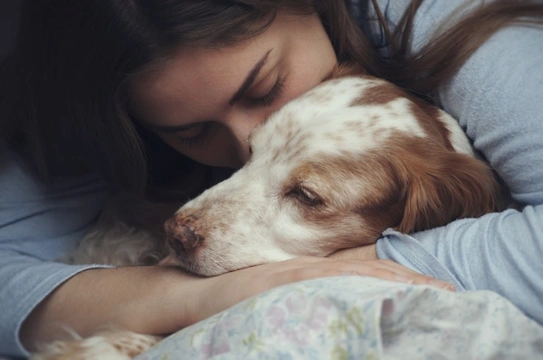
Eight ways to make life safer and more comfortable for your blind dog
There are a reasonably large number of health conditions and problems that can lead to full or partial blindness in dogs, and as your dog reaches maturity and then old age, their chances of retaining their original vision levels drop exponentially year on year.
Whilst finding out that your dog is losing their vision can of course be worrisome for dog owners and does undoubtedly require more consideration and care than looking after a dog with normal eyesight does, blind and partially sighted dogs can still live full, happy lives.
Whether you own a dog that has been blind all of its life or are just getting to grips with the fact that your dog is losing their sight, there are a whole range of different things that you can do to make them safer and more comfortable, and so minimise the impact of their loss of vision on their day to day life.
In this article, we will share eight suggestions of things that you can do to make life safer and more comfortable for a dog that is blind or losing their eyesight, in order to help them to retain their sense of security and quality of life. Read on to learn more.
1. Don’t change anything major
Once a dog has lived in the same home for some time, they will be able to navigate around it by memory and the use of their other senses, but for blind dogs, all of this becomes useless if you start rearranging the furniture! Keep your furniture and other fixtures in the same places, and do not rearrange things unnecessarily.
Even moving a chair or table a couple of inches one way can cause your dog to bump into it or get disoriented, so once your dog knows the layout of their home, keep it the same-and take care when it comes to leaving things on the floor or on the stairs where your dog might trip over them.
2. Scent marks
The dog’s sense of smell is their keenest scent, and this really comes into its own if your dog is blind, meaning that they will be much more reliant on this sense than otherwise.
Every room, person and thing in your home will have a distinct scent, and your dog will likely know the kitchen smells from those of the bedrooms and other rooms too. However, things like air fresheners or even the smell of clean washing can interfere with the background scents that your dog may be relying on to orient themselves, so think carefully about anything perfumed or scented that you use at home, and how this may affect your dog.
3. Carpets and floors
Different types of carpets have different textures, as do of course other types of flooring such as tiles, lino, rugs and wooden floors. If different rooms or areas of the home have different types of flooring, this can also help your dog to orient themselves and develop an awareness of where they are and what is around them, which can help to keep them on an even keel.
4. Verbal commands
A dog that is blind or partially sighted will not be able to follow hand signals or facial expressions, and so it is important to teach your dog to follow vocal commands if they cannot see you. If your dog is already trained with combination commands and has a progressive degeneration of their visual acuity, use this time sensibly, in order to begin teaching them verbal commands to accompany the signals that they are used to, so that when they lose their sight entirely, they will still know what to do!
5. Audible alerts
A blind dog that does not realise there is someone nearby will get quite a shock if you suddenly touch them or speak nearby, which may potentially cause your dog to snap. This means that you should get into the habit of making an audible alert sound that your dog will hear as you approach, such as stamping your feet or talking in a low voice when you enter a room, or move around your dog when they are asleep.
6. Other pets
Other pets too, such as cats and other dogs, may not be aware that your dog cannot see them, and again may potentially scare your dog and trigger a negative reaction if they approach them unawares. Using a bell on the collar or a collar tag that jingles will ensure that when the other pets move, they cannot do so soundlessly, which will let your dog know where they are.
7. Walking and socialising
When you walk your blind dog, it is a good idea to use a harness rather than a collar and lead, and to stick to familiar areas with them, particularly if you have to walk along roads. Your dog should be taught stop commands and other cues to let them know what is around them-for instance, a curb or a step.
8. Alerting others of your dog’s vision deficiencies
Finally, it is important that anyone who may come into contact with your dog knows that they are blind so that they do not surprise or scare your dog, so having this information marked in large print on the dog’s collar can help, as can wearing a yellow ribbon to caution people to give your dog some space.



